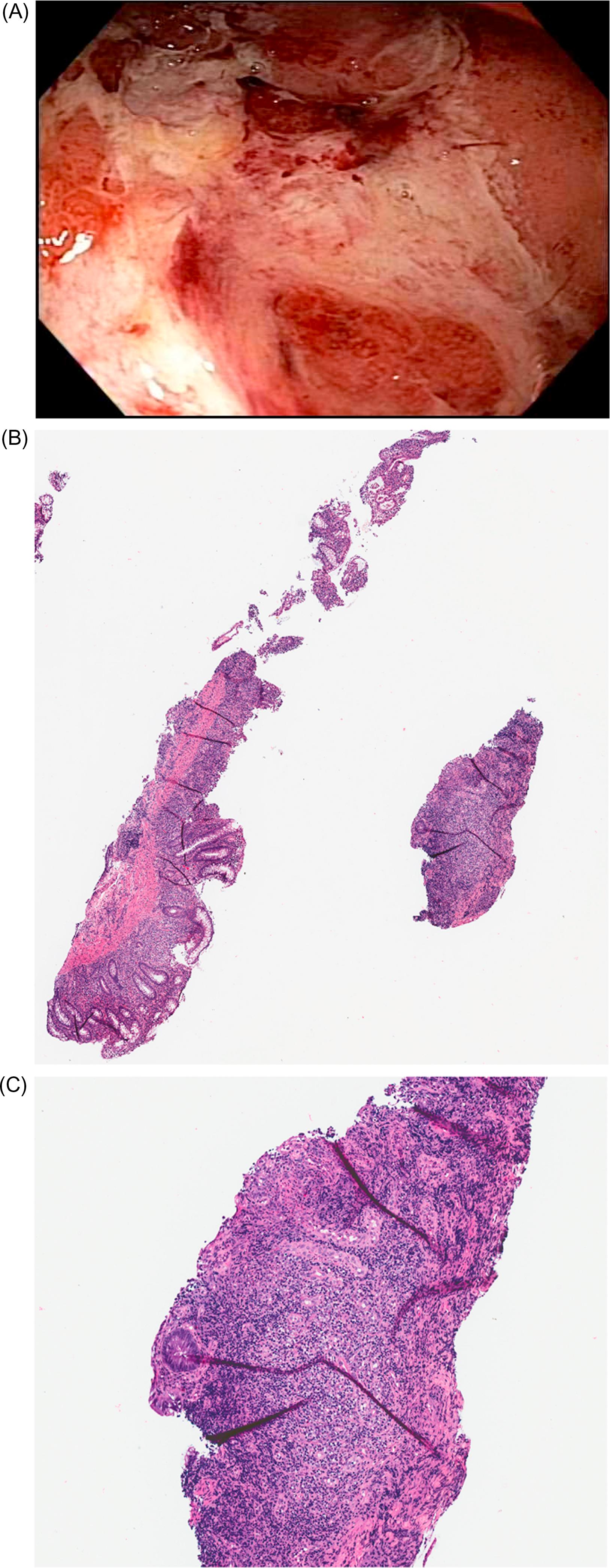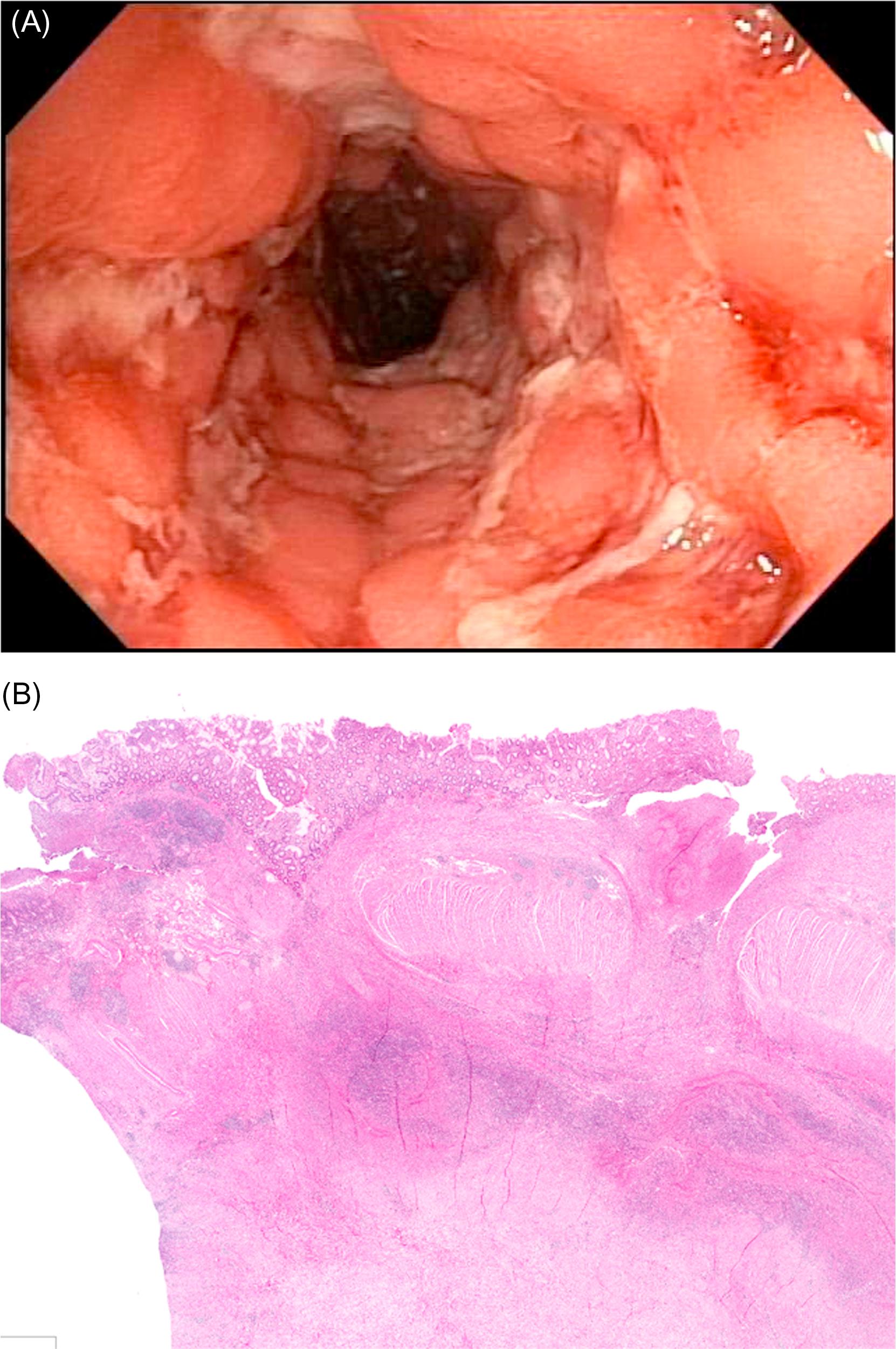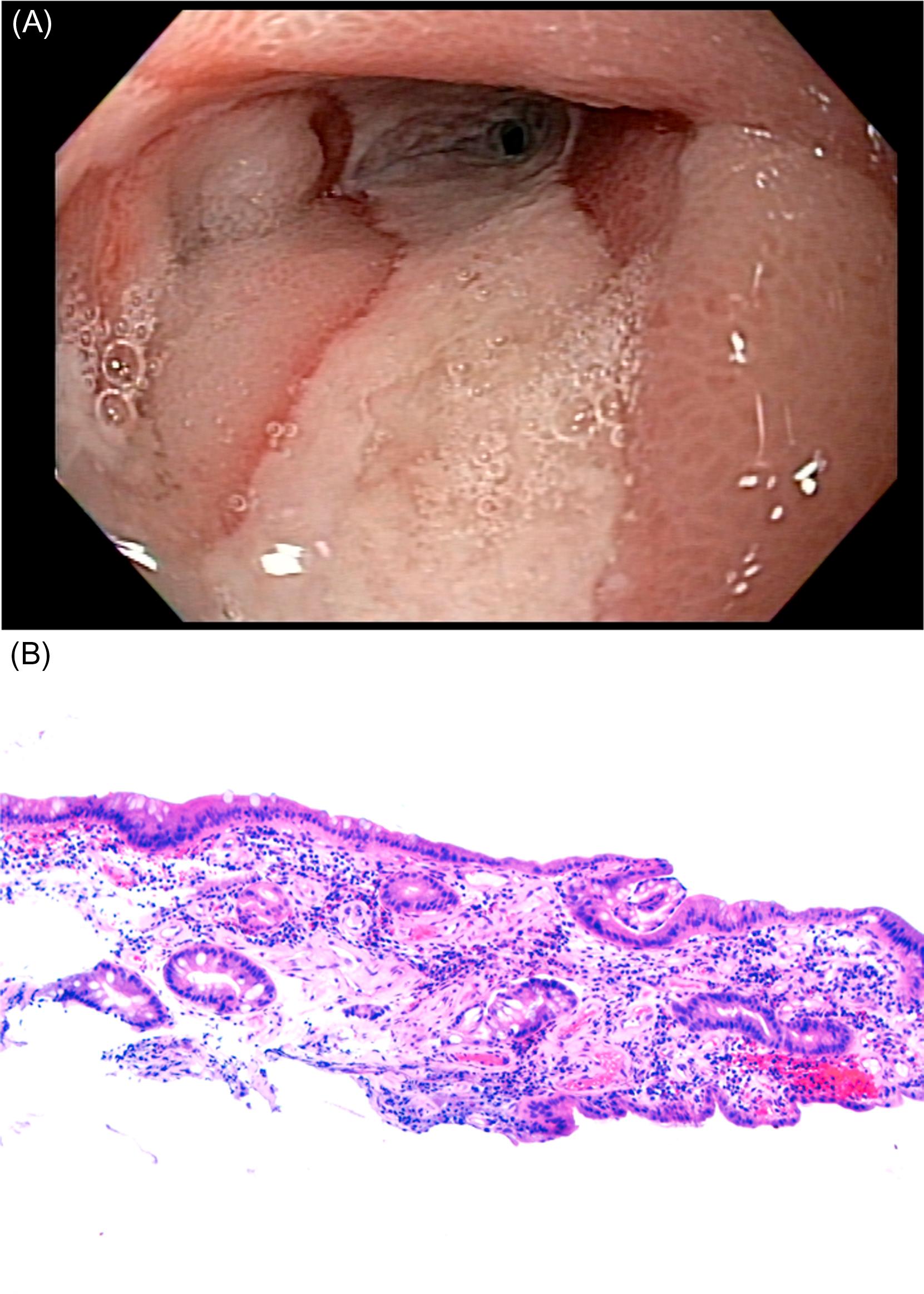Physical Address
304 North Cardinal St.
Dorchester Center, MA 02124
acid-fast bacillus acute infectious colitis autoimmune enteropathy Crohn’s disease dysplasia-associated lesion or mass endoscopic mucosal resection gastrointestinal graft-versus-host disease inflammatory bowel disease intestinal tuberculosis Nonsteroidal antiinflammatory drugs solitary rectal ulcer syndrome tumor necrosis factor ulcerative colitis AFB
AIC
AIE
CD
DALM
EMR
GI
GVHD
IBD
ITB
NSAIDs
SRUS
TNF
UC
Reaching an accurate diagnosis of inflammatory bowel disease (IBD) requires the synthesis of clinical, radiographic, endoscopic, and histological information. Endoscopy allows for the direct visualization of mucosa, assessment of extent of disease, and mucosal sampling for histologic examination. The biopsy samples obtained from endoscopy enable the pathologist to provide a histopathologic assessment of the chronicity and grade of colitis, neoplastic complications of IBD, superimposed pathologies, and an alternative diagnosis for the clinically and endoscopically presumed “IBD.” This chapter aims to provide histologic examples of several common endoscopic abnormalities in patients undergoing ileocolonoscopy or colonoscopy.
IBD is characterized with relapsing disease course, with intervening flare up and remission. Endoscopic and histologic examinations of the affected intestine help assess the severity of disease and its response to treatment .
Endoscopic features of ulcerative colitis (UC) are as follows: Active inflammation in UC typically shows diffuse erythematous, friable, and granular mucosa with loss of the normal vascular pattern. The lesions begin at the anorectal junction and spread proximally in a homogenous fashion. The mucosa may show erosions, ulcerations, and spontaneous bleeding ( Fig. 34.1A ). Biopsy with histology is used to demonstrate the distribution and focality of disease throughout the colon. A minimum protocol should include biopsies from the terminal ileum, right colon, transverse colon, descending colon, sigmoid colon, and rectum.

Histologic features of UC are as follows: Corresponding to its endoscopic features, histology of UC is characterized by diffuse and homogenous chronic active colitis with near universal involvement of rectal mucosa. The inflammatory infiltrate of UC will involve predominantly the mucosa. Activity refers to the presence of neutrophilic inflammation within crypts and surface epithelium. The degree of activity is subjectively measured as mild, moderate, or severe depending on the density of neutrophilic infiltrate, presence of crypt abscesses, cryptitis, erosion, and ulceration ( Fig. 34.1B and C ). Chronicity is determined by architectural distortion such as crypt branching, shortening, and/or loss ( Fig. 34.1B ), basal lymphoplasmacytosis ( Fig. 34.1B ), and metaplasia, including the pyloric gland metaplasia in the ileum and colon and Paneth cell metaplasia in the left colon and rectum.
Endoscopic features of Crohn’s disease (CD) are as follows: CD colitis is usually segmental and asymmetrical and spares the rectum. The typical endoscopic findings of CD include longitudinal ulcerations (predominantly along the mesentery side), cobblestoning lesions, and segmental distribution of disease ( Fig. 34.2A ). The patients with CD may present with aphthous ulcers in early stage.

Histologic features of CD are as follows: CD is also characterized by chronic active enteritis, colitis, and enterocolitis. CD involvement of the colon is typically noncontiguous, corresponding to skip lesions appreciated on endoscopy, with normal mucosa appearing between foci and segments of affected mucosa. In contrast to UC the inflammatory infiltrate of CD colitis is classically transmural, breaching the muscularis mucosae and extending into the submucosal space. Granulomas may also be seen, yet they are only found in a minority of biopsies and are not a requirement for diagnosis. The histology of CD is best appreciated on resected specimens ( Fig. 34.2B ). In this resected colon segment, there is chronic active colitis, mucosal ulceration, fissuring ulceration, mural abscesses, mural fibrosis, and mural abscesses. The activity and chronicity of CD colitis on biopsies are assessed in the same manner as for UC.
Endoscopic features of mucosal scars, stenosis, and fistula in CD are as follows: prolonged and chronic CD may lead to mucosal scars and stenosis ( Fig. 34.3A ). In some cases, fistula may develop in a variety of sites. Endoscopic examination may identify fistula opening.

Histologic features of mucosal scars, stenosis, and fistula in CD are as follows: Chronic inflammation in CD can lead to mucosal scars and stenosis, with or without fistula. The histology of mucosal scar in CD may be subtle and nonspecific and may only manifest as fibrosis ( Fig. 34.3B ) on biopsy and hypertrophy of muscularis mucosae . The histology of stenotic areas in CD is nonspecific. Most often the lamina propria contains fibrosis, and there is hypertrophy of the muscular layers and fibrosis of the intestinal wall ( Fig. 34.2B ). Fissures and fistulas are lined by histiocytic inflammation, occasionally with a giant-cell reaction, and are often accompanied by granulation tissue and fibrinopurulent debris (pus, clinically).
Become a Clinical Tree membership for Full access and enjoy Unlimited articles
If you are a member. Log in here